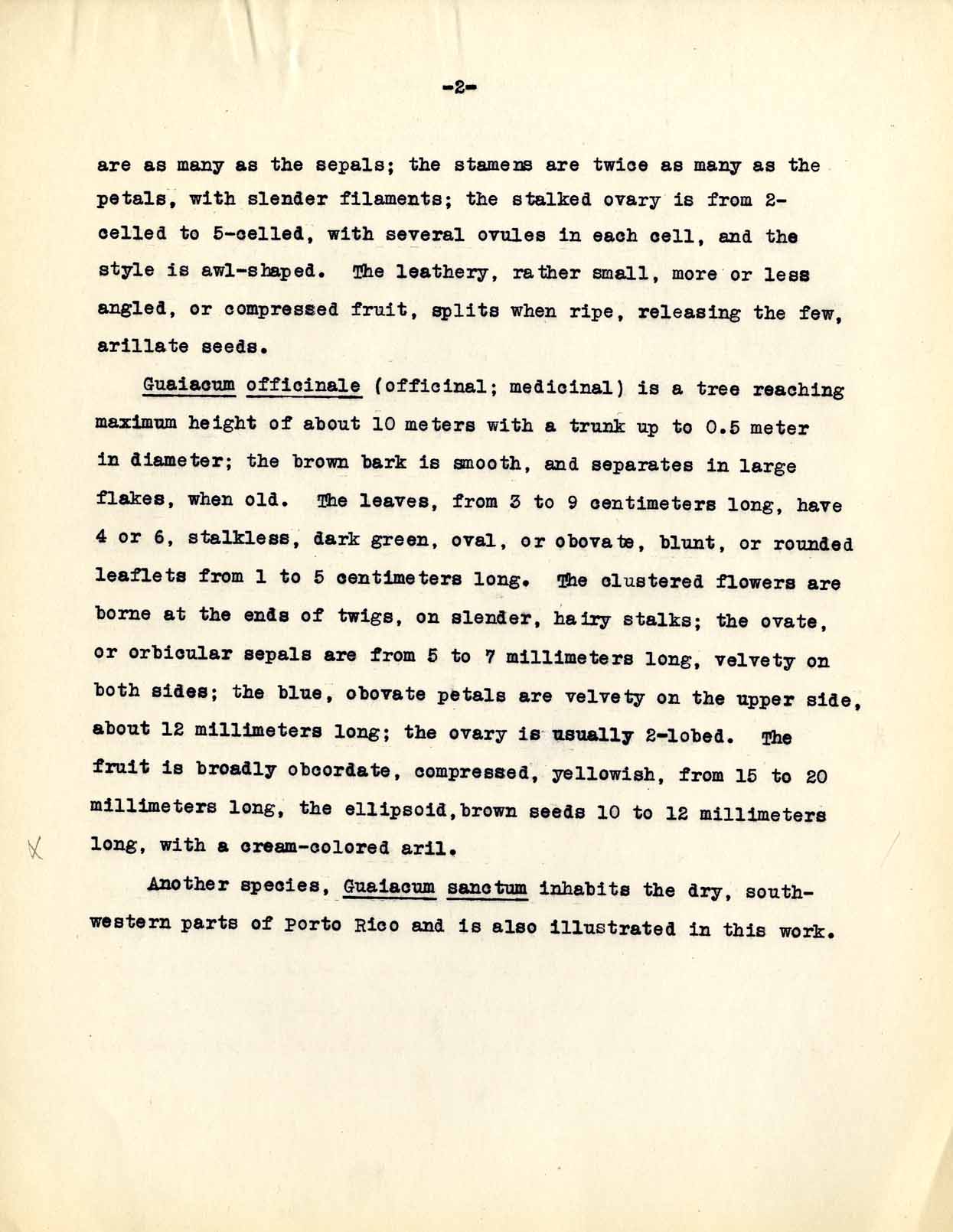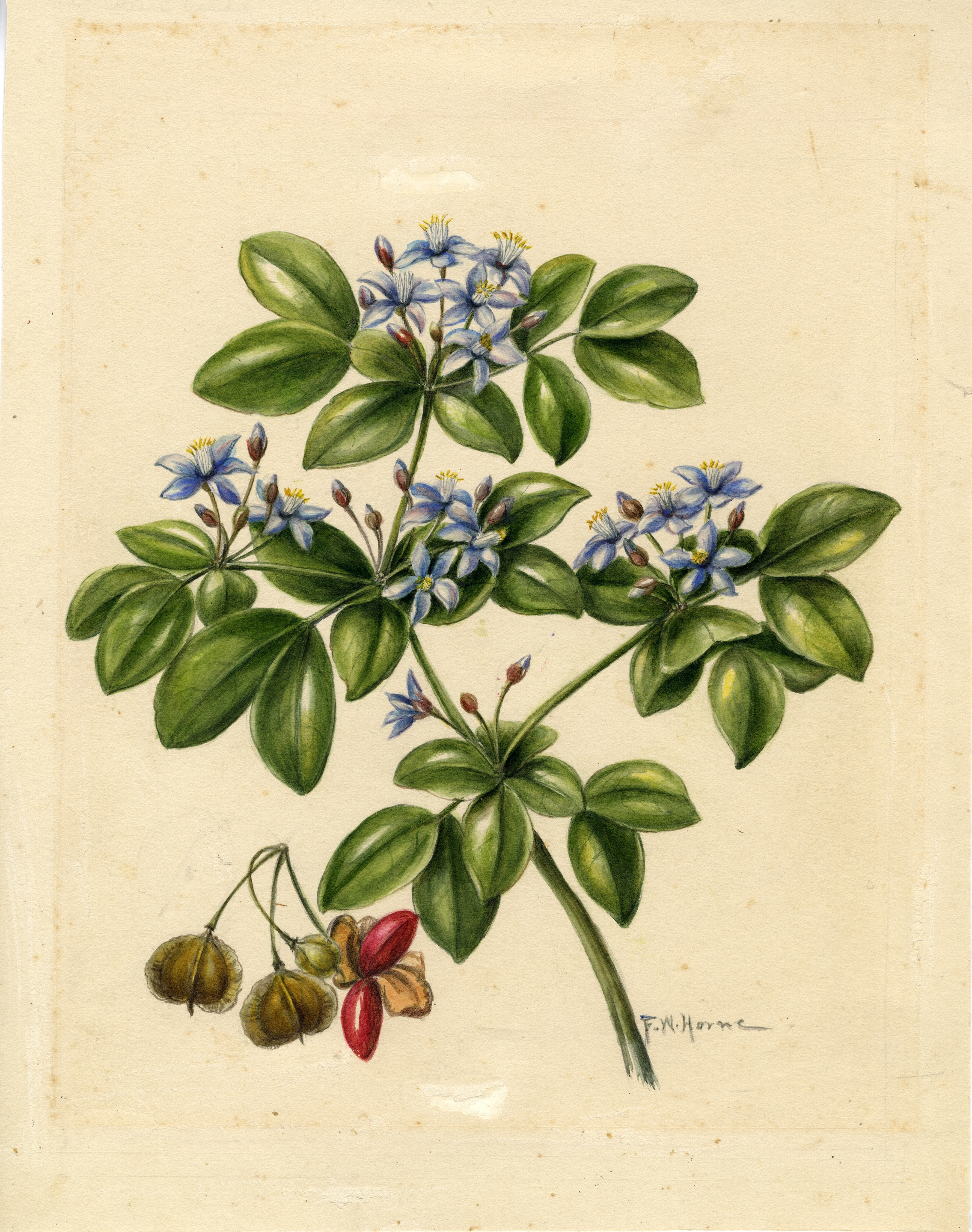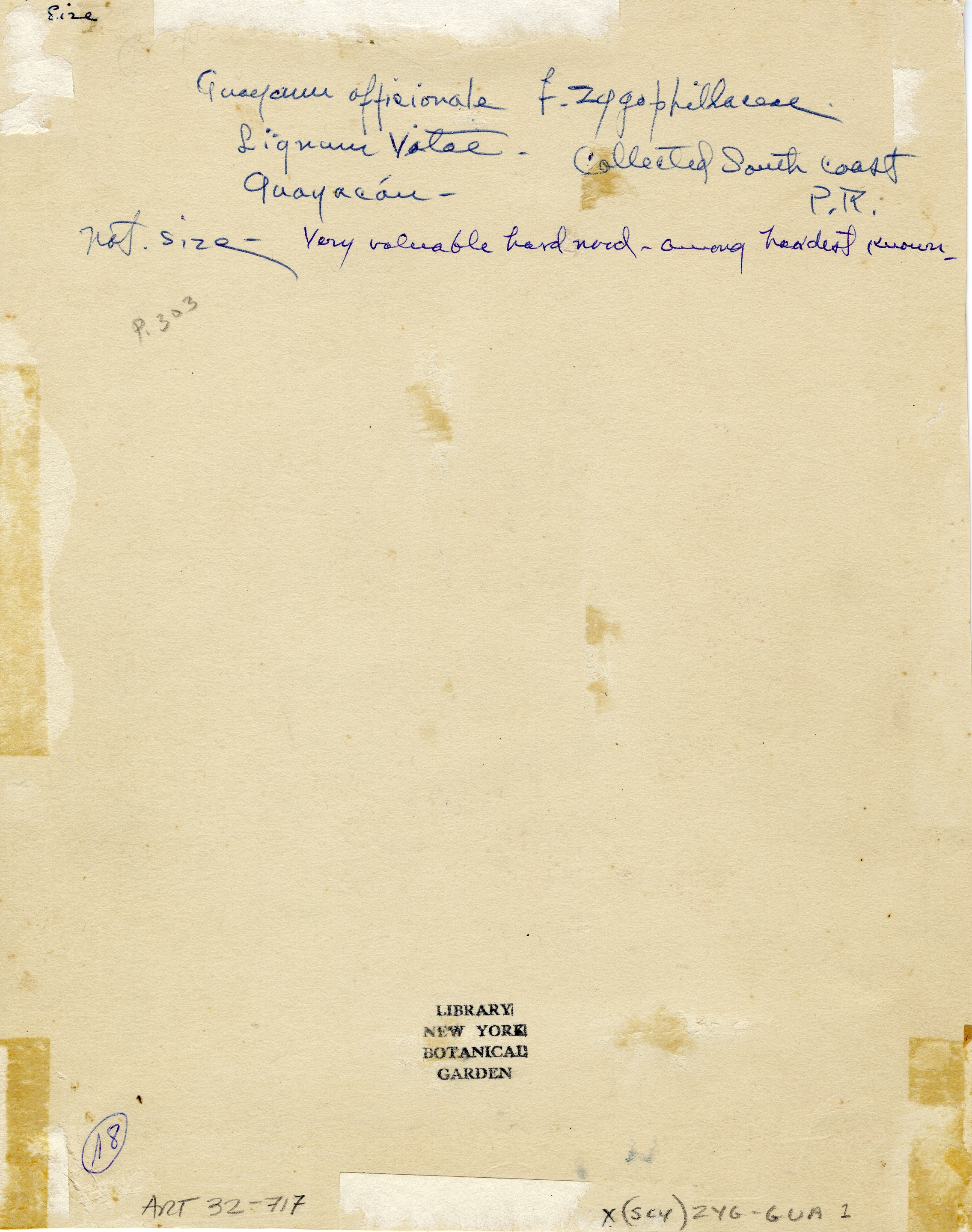Guaiacum officinale L.
Rights: Rights reside with creator, otherwise property of NYBG.
-
Authority
Britton, Nathaniel L. Flora Borinqueña.
-
Family
Zygophyllaceae
-
Scientific Name
-
Description
Species Description - The yellowish-brown wood of this densely leafy tree of tropical America is exceedingly hard, dense, strong and heavy, sinking in water, its specific gravity being about 1.25, valued for rollers, hubs, cogs, bowls, and pulleys, and turned into a variety of small objects; it is also used in medicine. The profuse, blue flowers make the tree elegant, when in bloom. It has wide distribution through the West Indies and continental tropical America, in Porto Rico restricted to plains and hillsides at low elevations, in the dry southern and southwestern districts, and the small islands Vieques and Culebra, but has become scarce, here as elsewhere. There is a barrio called Guayacan on the eastern coast of Porto Rico, where the tree is reported as growing formerly. Guaiacum (derived from the aboriginal name) is a genus composed of about 8 species of tropical and subtropical American evergreen trees and shrubs, established by Linnaeus, the species here illustrated typical. They have hard and heavy, resinous wood, once-compound, opposite, stalked leaves with few or several inequilateral, untoothed leaflets, and clustered, or solitary, axillary, or terminal, stalked, perfect flowers. The 4 or 5 sepals are somewhat united at the base; the blue or purple petals are as many as the sepals; the stamens are twice as many as the petals, witrh slender filaments; the stalked ovary is from 2-celled to 5-celled, with several ovules in each cell, and the style is awl-shaped. The leathery, rather small, more or less angled, or compressed fruit, splits when ripe, releasing the few, arillate seeds. Guaiacum officinale (officinale; medicinal) is a tree reaching maximum height of about 10 meters with a trunk up to 0.5 meter in diameter; the brown bark is smooth, and separates in large flakes, when old. The leaves from 3 to 9 centimeters long have 4 or 6 stalkless, dark green, oval, or obovate, blunt, or rounded leaflets from 1 to 5 centimeters long. The clustered flowers are borne at the end of twigs, on slender, hairy stalks; the ovate or orbicular sepals are from 5 to 7 millimeters long, velvety on both sides; the blue, obovate petals are velvety on the upper side, about 12 millimeters long; the ovary is usually 2-lobed. The fruit is broadly obcordate, compressed, yellowish, from 16 to 20 millimeters long, the ellipsoid, brown seeds 10 to 12 millimeters long, with a cream-colored aril. Another species, Guaiacum sanctus inhabits the dry southwestern parts of Porto Rico and is also illustrated in this work.
-
Discussion
Guayacan Lignum Vitae Caltrop Family Guaiacum officinale Linnaeus, Species Plantarum 381. 1753.








